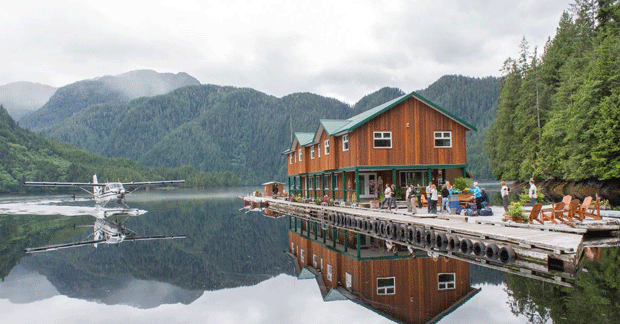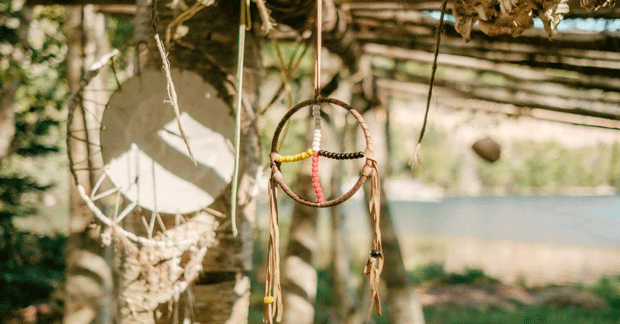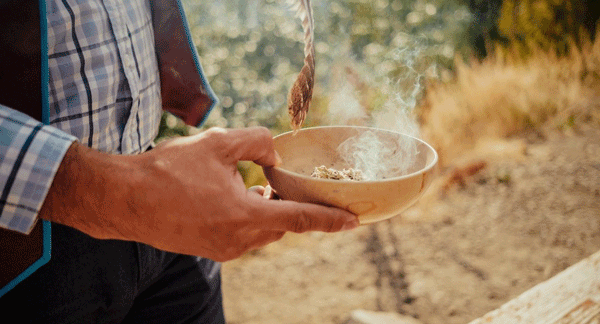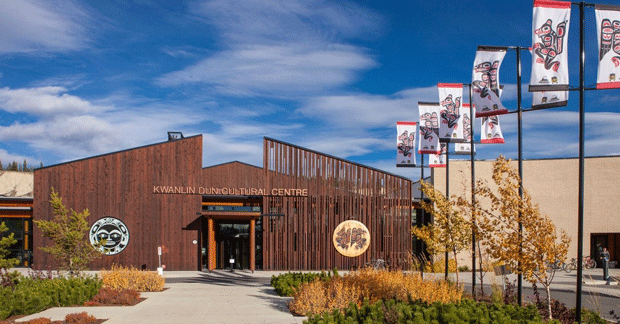In association with: Destination Canada
Canada’s appeal extends far beyond its wide-open landscapes, brilliant wildlife and entertaining attractions
Canada is rooted in hundreds of ancient Indigenous communities whose cultures and customs are preserved in every province, offering visitors a diverse and varied cultural experience unlike anywhere else in the world.
Whether it’s visiting a cultural centre or perusing an art gallery, signing up for a guided walk or sampling an indigenous dish passed down through generations, clients looking for an authentic Canadian experience certainly won’t be short on choice.
Indigenous-owned and operated lodges
Lodges offer a unique and immersive experience for clients seeking to truly get under the skin of a region’s culture. Visitors can head to Spirit Bear Lodge to seek out the Kermode (spirit) bear in the traditional territory of the ancient Kitasoo/Xai’xais People, or experience land and marine-based grizzly viewing tours from British Columbia’s Floating Grizzly Bear Viewing Lodge, which sits in the traditional territory of the Da’Naxda’xw Awaetlala First Nation.
Visiting one of Canada’s nine Innu communities is also a must. Clients can sleep next to blowing whales at Anse à la Cave, which offers a range of campsites and rustic but modern lodges, or in the heart of Essipit in the province of Quebec at Natakam Condo-Hôtels, where whales feed metres from the shore.

Bookable day packages and experiences
From wildlife viewing with indigenous guides to crafting experiences with indigenous hosts, every province and territory in Canada offers a vast range of bookable packages and experiences for curious travellers. Don’t miss Winnipeg’s Manito Ahbee Festival, which celebrates indigenous arts, culture and music, or the 10-day Great Northern Arts Festival, the longest-running festival of Arctic Art and music in North America, which has been held on the lands of the Gwich’in and Inuvialuit People in Inuvik every summer since 1989.
At Metepenagiag Heritage Park, clients can tread the path of the Mi’kmaq elders, who lived in New Brunswick for more than 30 centuries, while hiking and camping at Kejimkujik National Park in Nova Scotia offers an opportunity to discover relics of the Mi’kmaq People.
At Vancouver’s famed downtown attraction, Stanley Park, Talaysay Tours provides a 90-minute excursion where visitors can learn about how the Coast Salish People traditionally lived.
In Ottawa, travellers can take a self-guided stroll around Pindigen Park, which was created in partnership with local indigenous communities, or book a walking tour with Indigenous Walks to gain a 360-degree view of the capital’s history.
Those pining for a wildlife experience should head to the Essipit Innu territory in Quebec, where they can enjoy an excursion to see the black bear, called ‘mashku’ in the Innu language; spot 13 different species of marine mammals in the estuary from the comfort of a Zodiac boat; or kayak with whales.

Culinary experiences
Canada creaks at the seams with culinary experiences – and a hefty slice of them offer a unique viewpoint into indigenous food and cuisine. Restaurants helmed by indigenous chefs include Feast Cafe Bistro in Winnipeg, where self-taught chef Christa Bruneau-Guenther celebrates indigenous foods such as bison meat and bannock (bread) in a community-led space.
In Vancouver, Squamish Nation chef Paul Natrall introduced the city’s first indigenous food truck, Mr Bannock, in 2018, using traditional cooking methods such as clay and stone baking.
For clients in Toronto, indigenous restaurants include Tea-N-Bannock, where meals include bison burgers and Navajo tacos, and NishDish Marketeria & Catering for culinary offerings such as roasted elk, Arctic char and blackberry cobbler.

Indigenous history
Canada has invested heavily into its cultural attractions, and indigenous museums and galleries abound. Haida Heritage Centre on British Columbia’s northwest coast is a great example. The site features a museum, performance house and two multi-purpose classrooms in which it explores the art, language and history of the Haida People, who occupied an archipelago off the coast of British Columbia for at least 12,500 years.
Clients can head to the Kwanlin Dün Cultural Centre on the banks of the Yukon River to hear about the music, art and traditional food of the Kwanlin Dun People, or the award-winning Head-Smashed-In Buffalo Jump in Alberta, a communal buffalo hunting site.
In Whistler, clients can explore the intricate art of Northwest Coast First Nations at the Audain Art Museum, while those visiting Calgary should head to the Moonstone Creation Gallery to learn about the indigenous-owned, family-run business that represents more than 50 indigenous artists across Canada.

PICTURES: Squamish Lil’wat Cultural Centre/Logan Swayze; Great Bear Lodge; Destination Canada; Moccasin Trails Inc.; Kwanlin Dün Cultural Centre

Discover more experiences at destinationindigenous.ca and travel.destinationcanada.com
